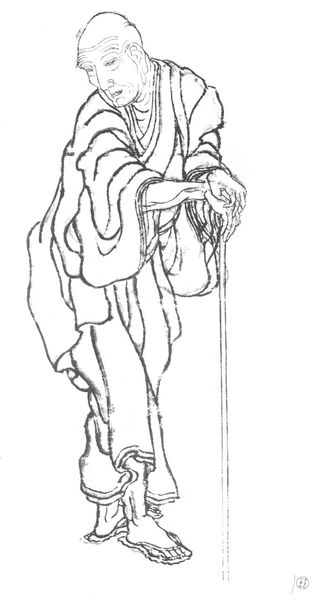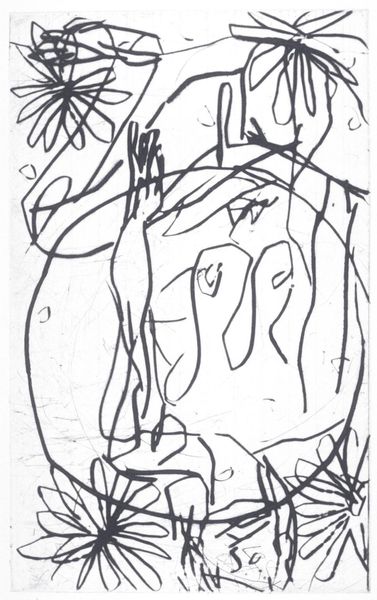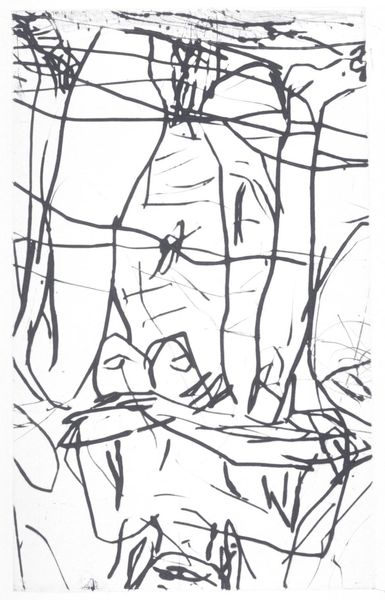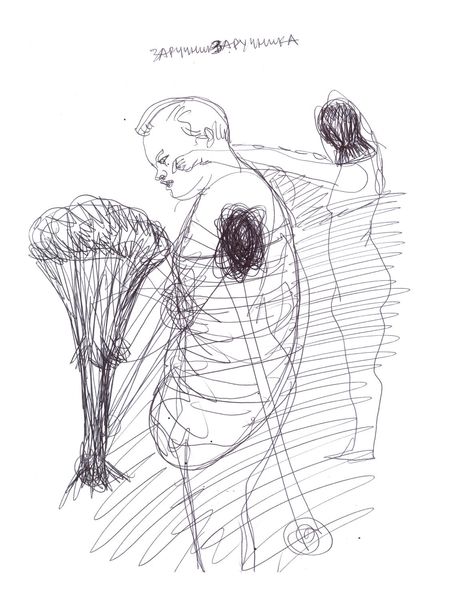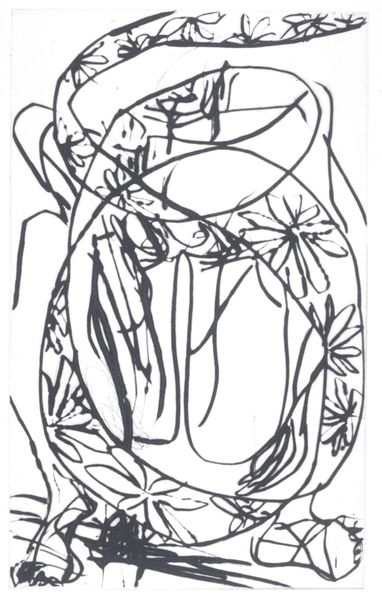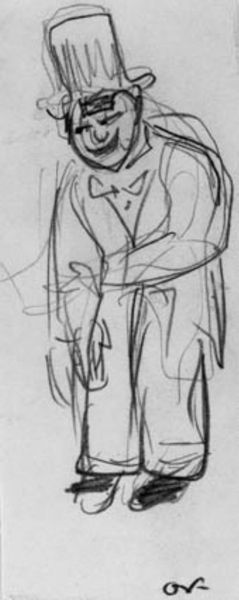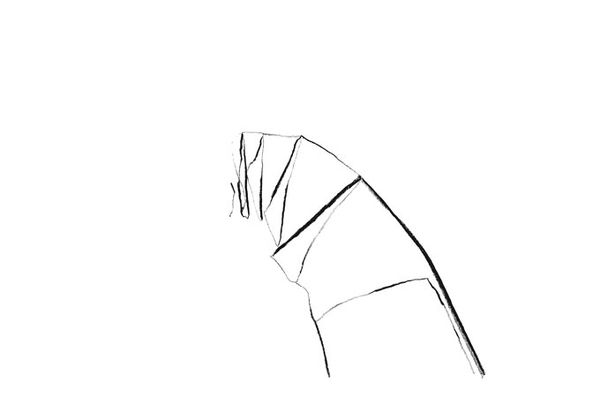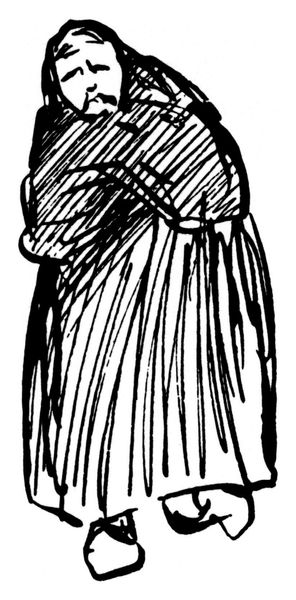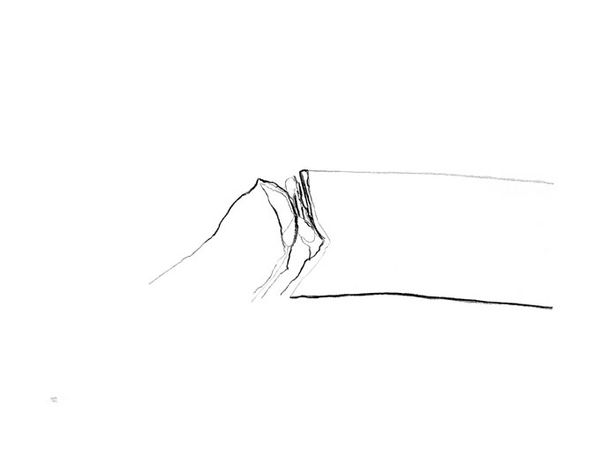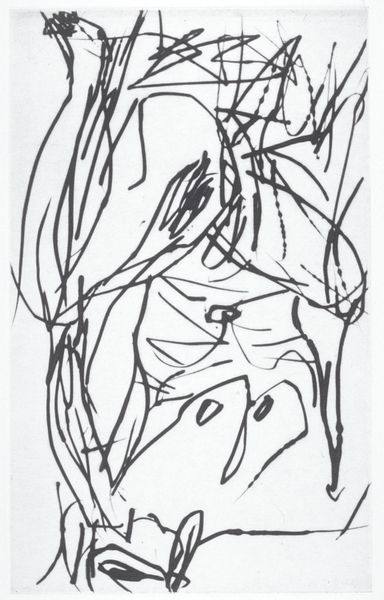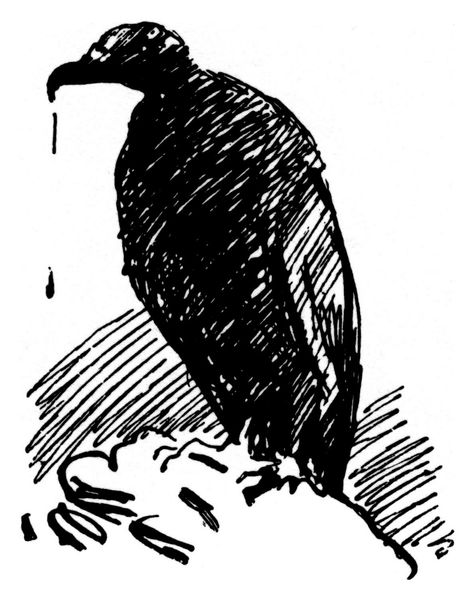
drawing, ink
#
portrait
#
drawing
#
comic strip sketch
#
pen illustration
#
line drawing illustration
#
junji ito style
#
cartoon sketch
#
ink line art
#
linework heavy
#
ink
#
ink drawing experimentation
#
thin linework
#
line
#
grotesque
#
line illustration
Copyright: Alexander Bogen,Fair Use
Editor: We're looking at Alexander Bogen's "Tear," a drawing from 1997. It’s stark, just ink on what I presume is paper. It feels… intense, and maybe a little unsettling with the juxtaposition of a weeping person and a skull. What do you see in this piece? Curator: I see a potent commentary on mortality and emotion, deeply rooted in historical anxieties. Bogen gives us a raw portrait, seemingly vulnerable, but its real power resides in the way it connects personal suffering with larger social experiences of loss and resilience. Consider the historical context. The late 90s were a time of significant social and political upheaval. How might anxieties of the period shape its interpretation? Editor: I hadn’t thought about it like that. I was more focused on the immediate impact of the image - the emotionality, that line that's the "tear." Are you suggesting it’s less about personal grief and more about societal wounds? Curator: Precisely. The 'tear' could be interpreted as representing historical trauma – perhaps linked to experiences of displacement or conflict. Who gets to weep, and who is remembered in the collective narratives of the era? That skeletal figure also brings up questions of power and its inevitable demise. Bogen seems to challenge viewers to question dominant power structures and social inequalities. Editor: So, it’s not just about death, but who’s dying, and what injustices are connected to that death? It’s a very different read than my first impression. Curator: Absolutely. It’s a call to deconstruct conventional narratives. It compels us to consider how identities are shaped by cultural and political forces. What resonated with you most powerfully when you first viewed the drawing, and how does this understanding shape that? Editor: It makes me think about whose stories are prioritized in art, and in history. I definitely see Bogen’s "Tear" differently now, understanding it's engaging in conversations about trauma and visibility. Curator: I agree. Bogen has encouraged us to recognize both the past and present impacts on our lives, inspiring future generations to critically analyze cultural messages.
Comments
No comments
Be the first to comment and join the conversation on the ultimate creative platform.

